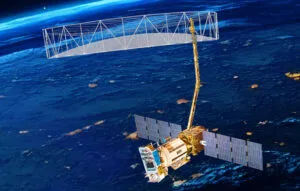It is a joint venture between NASA and ISRO, the Indian Space Research Organization, each of which provided one of the radars, and will monitor ice mass, vegetation biomass, sea-level rise and groundwater levels via its 12m diameter mesh dish.
“The agencies also expect the data to improve real-time monitoring of natural hazards such as earthquakes, tsunamis, volcanoes and landslides,” said TI, which has been partnering with ISRO for a decade and supplied a number of radiation-approved ICs for the mission – including a radiation-hardened power management die around which ISRO has developed a point-of-load power module.
Some of the parts are plastic packaged devices to QML Class P, using specialised plastic to meet out-gassing requirements.
“At TI, we offer different device classifications that help our customers balance the needs of their system,” according to the company. “For satellites operating in low Earth orbit, radiation-tolerant components, such as space-enhanced plastics, are tailored to meet the lower radiation requirements, shorter mission durations and higher volume of satellites by providing tested radiation performance in a cost-optimised plastic package.”

